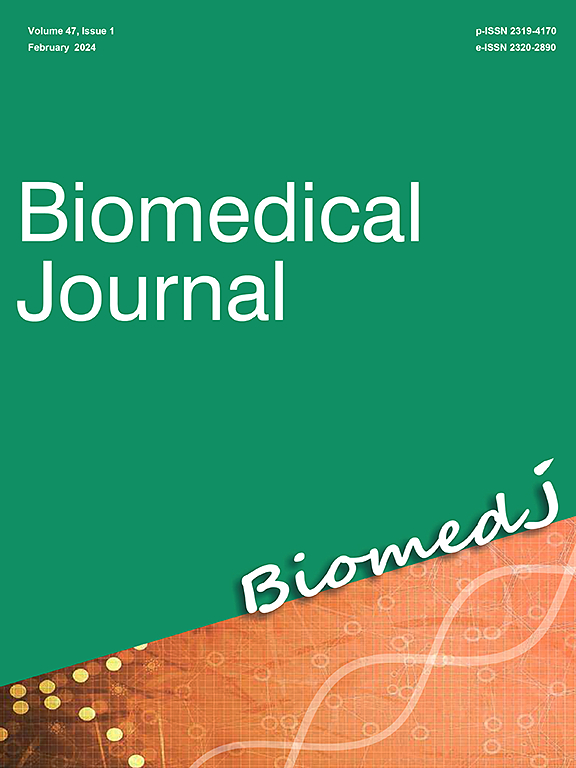全基因组关联研究发现 DRAM1 与台湾的妥瑞症有关。
IF 4.4
3区 医学
Q2 BIOCHEMISTRY & MOLECULAR BIOLOGY
引用次数: 0
摘要
背景:图雷特综合征(TS)是一种以运动和发声抽搐为特征的神经发育障碍。此前,通过全基因组关联研究(GWAS),在欧洲后裔人群中发现了几个与 TS 相关的易感基因位点。然而,TS 的确切致病机制尚不清楚;此外,以前针对 TS 的全基因组关联研究的结果是基于西方人群的,可能并不适用于其他人群。因此,我们在台湾的 TS 和慢性抽搐症(CTDs)患者中开展了一项 GWAS 研究,旨在阐明该人群中 TS 的遗传基础和潜在风险因素:对台湾 TS/CTDs 群体进行了 GWAS 分析,样本量为 1,007 名 TS 患者和 25,522 名祖先匹配对照。此外,还计算并评估了多基因风险评分:结果:在染色体12q23.2上发现了与DRAM1相关的全基因组重要位点rs12313062(p=1.43×10-8)和其他9个单核苷酸多态性,这是TS/CTDs群体中发现的一个新的易感位点。DRAM1是一种受p53调控的溶酶体跨膜蛋白,可调节自噬和细胞凋亡,对与自噬破坏相关的神经精神疾病具有潜在影响:本研究首次在台湾人群中开展了TS的GWAS,在染色体12q23.2上发现了一个与DRAM1相关的重要位点。这些发现为TS的神经生物学提供了新的见解,也为这一领域未来的研究提供了潜在的方向。本文章由计算机程序翻译,如有差异,请以英文原文为准。
Genome-wide association study identifies DRAM1 associated with Tourette syndrome in Taiwan
Background
Tourette syndrome (TS) is a neurodevelopmental disorder characterized by motor and vocal tics. Several susceptibility loci associated with TS have been identified previously in populations of European descent using genome-wide association studies (GWAS). However, the exact pathogenic mechanism underlying TS is unknown; additionally, the results of previous GWAS for TS were based on Western populations, which may not translate to other populations. Therefore, we conducted a GWAS in Taiwanese patients with TS and chronic tic disorders (CTDs), with an aim to elucidate the genetic basis and potential risk factors for TS in this population.
Methods
GWAS was performed on a Taiwanese TS/CTDs cohort with a sample size of 1007 patients with TS and 25,522 ancestry-matched controls. Additionally, polygenic risk score was calculated and assessed.
Results
Genome-wide significant locus, rs12313062 (p = 1.43 × 10−8) and other 9 single nucleotide polymorphisms, were identified in chromosomes 12q23.2, associated with DRAM1 and was a novel susceptibility locus identified in TS/CTDs group. DRAM1, a lysosomal transmembrane protein regulated by p53, modulates autophagy and apoptosis, with potential implications for neuropsychiatric conditions associated with autophagy disruption.
Conclusions
This study conducted the first GWAS for TS in a Taiwanese population, identifying a significant locus on chromosome 12q23.2 associated with DRAM1. These findings provide novel insights into the neurobiology of TS and potential directions for future research in this area.
求助全文
通过发布文献求助,成功后即可免费获取论文全文。
去求助
来源期刊

Biomedical Journal
Medicine-General Medicine
CiteScore
11.60
自引率
1.80%
发文量
128
审稿时长
42 days
期刊介绍:
Biomedical Journal publishes 6 peer-reviewed issues per year in all fields of clinical and biomedical sciences for an internationally diverse authorship. Unlike most open access journals, which are free to readers but not authors, Biomedical Journal does not charge for subscription, submission, processing or publication of manuscripts, nor for color reproduction of photographs.
Clinical studies, accounts of clinical trials, biomarker studies, and characterization of human pathogens are within the scope of the journal, as well as basic studies in model species such as Escherichia coli, Caenorhabditis elegans, Drosophila melanogaster, and Mus musculus revealing the function of molecules, cells, and tissues relevant for human health. However, articles on other species can be published if they contribute to our understanding of basic mechanisms of biology.
A highly-cited international editorial board assures timely publication of manuscripts. Reviews on recent progress in biomedical sciences are commissioned by the editors.
 求助内容:
求助内容: 应助结果提醒方式:
应助结果提醒方式:


